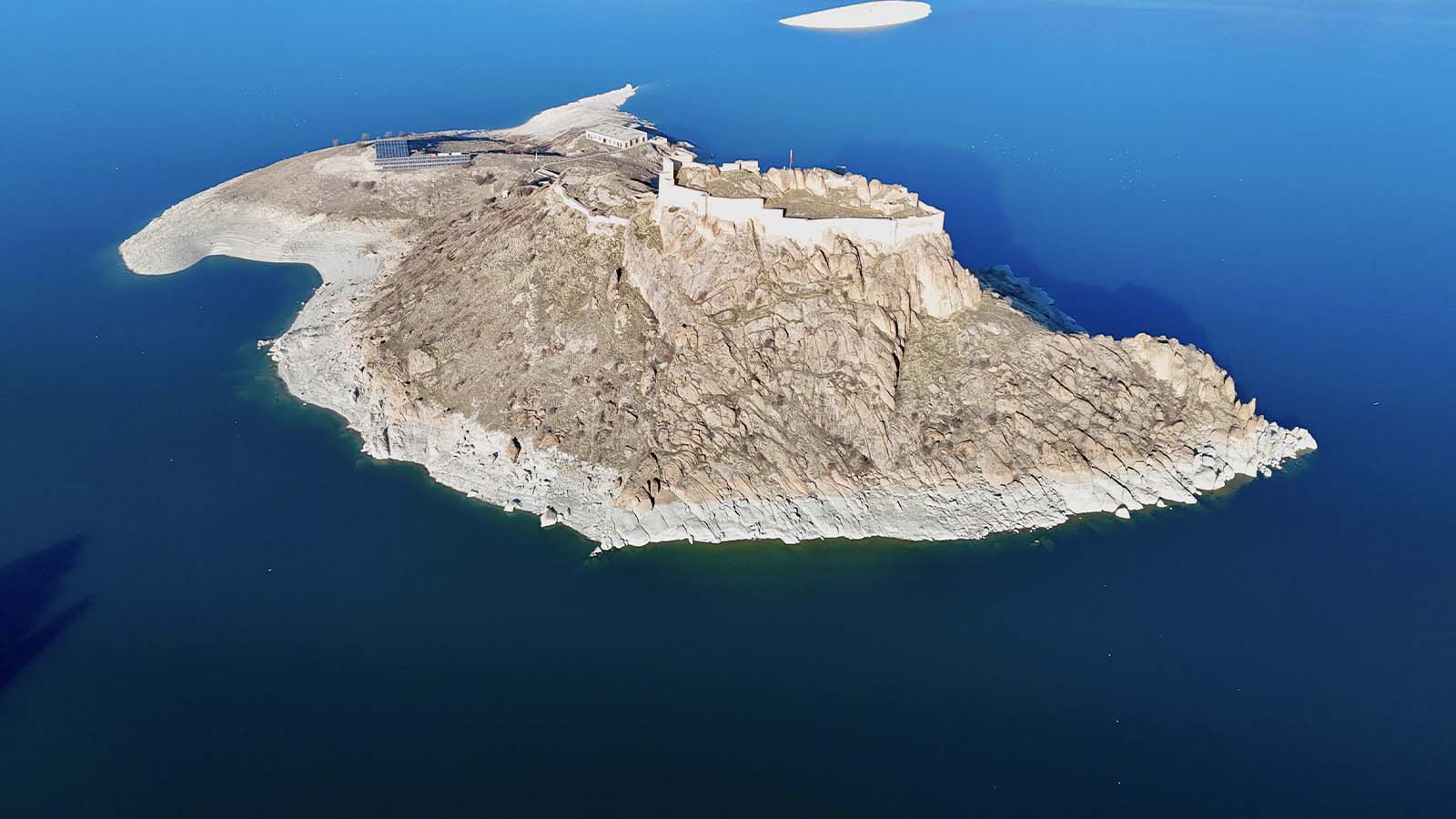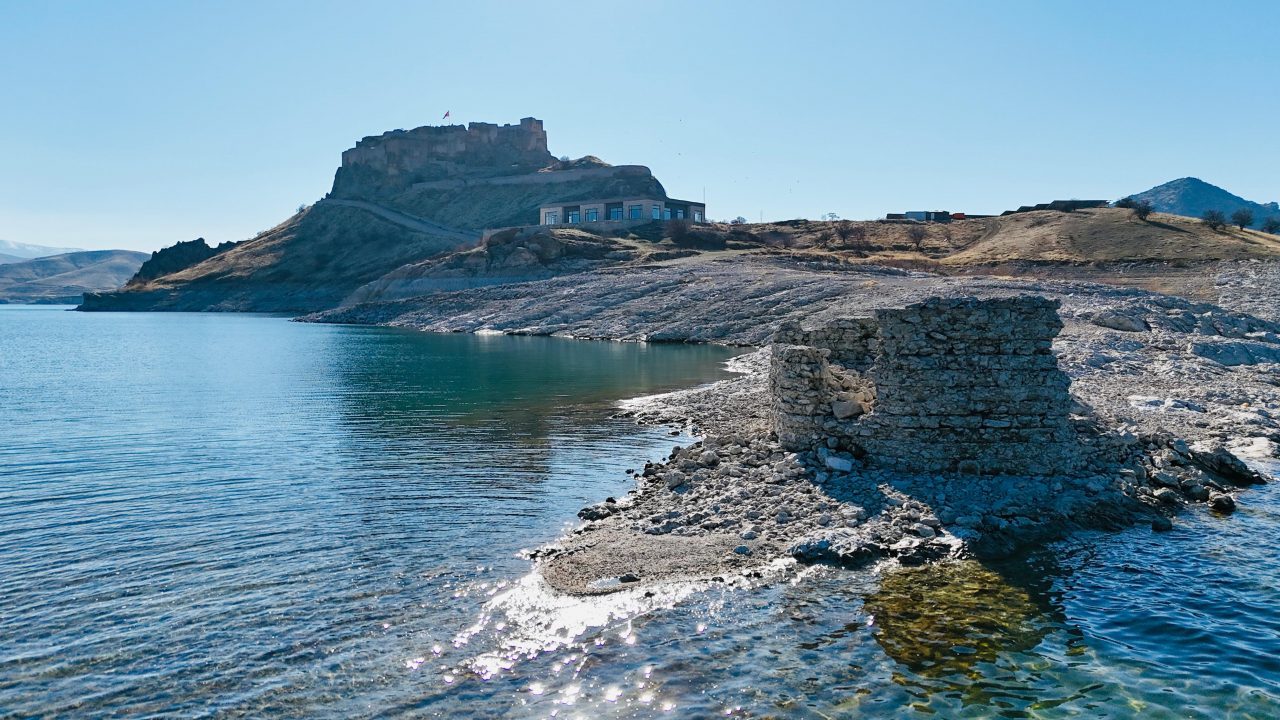
The 2800-year-old Pertek Castle’s entrance has re-emerged as water levels have receded
In Tunceli, eastern Turkey, the 2800-year-old Pertek Castle sits atop a hill. Built during the Urartian period, it became an island when the Keban Dam Lake submerged it in 1974. Recently, drought conditions caused the water level to drop, revealing the castle’s barracks.
The Urartians constructed Pertek Castle in the 8th century BC along the Murat River. After the Keban Dam was built, the castle remained underwater for decades. Various civilizations, including the Persians, Greeks, Romans, Seljuks, and Mengüceks, used the castle throughout history. The Ottomans restored it, and today it features two concentric walls with structural remains in between. The southern facade showcases red bricks set among hewn stones, along with remnants of a cistern and other structures.

This year, the barracks of Pertek Castle have reappeared due to the drought affecting the Keban Dam Lake. Soldiers and visitors once used these stone-built barracks as a checkpoint and a watchtower for nearby agricultural lands.
The Civilization of Urartu: A Powerful Empire in Eastern Anatolia
The Urartians were a significant civilization that thrived in the eastern region of Anatolia between the 9th and 6th centuries BCE. Their capital, Tuşpa (modern-day Van), was known for its advanced agricultural and irrigation systems, as well as remarkable architectural achievements.
Originating from the Caucasus, the Urartians settled in eastern Anatolia and gradually strengthened their presence. During this time, they engaged in conflicts with neighboring states, successfully expanding their territory. One of the most powerful periods of Urartu was during the reign of King II. Sarduri, when the state controlled a large part of the Eastern Anatolia region, Northwestern Iran, and the Aras Valley.
However, in the 6th century BCE, the Urartian state began to weaken due to attacks from the Medes and Assyrians. Internal strife during this period also contributed to the rapid decline of the civilization.
This overview highlights the Urartians’ significant role in the history of Eastern Anatolia, showcasing their achievements and the challenges they faced that ultimately led to their downfall.
You may also like
Calendar
| M | T | W | T | F | S | S |
|---|---|---|---|---|---|---|
| 1 | 2 | 3 | 4 | 5 | 6 | |
| 7 | 8 | 9 | 10 | 11 | 12 | 13 |
| 14 | 15 | 16 | 17 | 18 | 19 | 20 |
| 21 | 22 | 23 | 24 | 25 | 26 | 27 |
| 28 | 29 | 30 | ||||
Leave a Reply